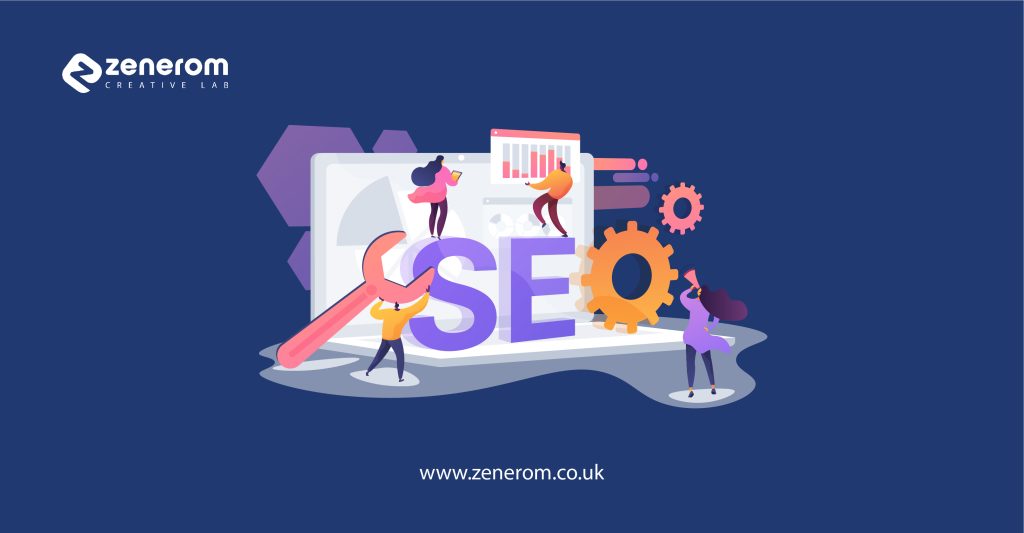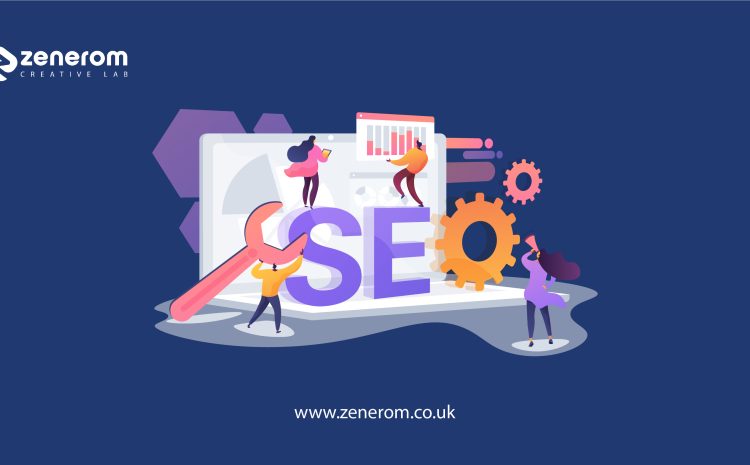Impact Of Website Design on SEO
Since web design incorporates both coding and graphic design, it is not solely a developer’s obligation. Marketers should be involved in every step of the process to get the most out of your new website. Many businesses separate their marketing and design departments. This is a risky mistake that will result in you losing out on simple wins throughout the growth stage. This is because web design is much more than only about looks. Every facet of your online visibility is influenced by good web design. Your website is the first place people go to understand about your company, and seems to be the key to increasing your search engine visibility.

How Does Web Design Affect SEO?
Although aesthetics and text are important, your team should also consider professional SEO service while creating your future website. That’s because your website’s design has three different effects on SEO.
The navigation structure of the website
The average page loading speed, bounce rate, engagement metrics, and conversions are all affected by the navigation structure of your website. These elements contribute to greater revenue and earnings as well as improved search ranks in search engine results pages.
If consumers can’t find what they’re looking for on your website or don’t know where to go next, you’ll lose them and lose a lot of money. It’s a balancing act to create a well-designed and innovative navigation menu that also supports a website’s SEO strategy. To develop something that would be user-friendly and intuitive, you may have to compromise part of your artistic vision. Rich results on the search page can also be the outcome of a well-designed menu with defined categories. This could boost trust and organic click-through rates.
The ‘404’ page
If a person finds a 404 error page, it is reasonable to assume that he will leave your website. The 404 error message appears when a user reaches a dead end due to a broken link or a page that no longer exists. You can, however, convert it into a user-friendly site that invites users to stay on your page with some ingenuity and planning. Although it is ideal to have no dead links on your website, it is hard to completely eliminate the risk of a 404 error. The 404 page can be triggered by a website user manually typing the erroneous URL, for example.
As a result, you should be prepared by building a distinctive yet useful 404 web page. This will allow you to retain your visitors on your website longer, reducing bounce rates and improving on-page time. These good signals will aid your search engine results in the future.
The loading speed of a website
The speed with which your website loads is a significant component in search engine rankings. The design of your website will have a serious influence on how quickly your pages load. Test the loading speed of the website with our team of SMO specialists. Your website should load in under one second if possible.
Try using the following suggestions if yours takes longer:
- Reduce the size of your CSS and JS files.
- Use compressed images
- If at all possible, use a CDN.
- Reduce HTTP requests.
- Redirects should be used sparingly.
- Make use of a caching service.
- Improve your web hosting service.
Images, image size, and alt text
Almost every website makes use of photographs. Images that are pertinent and appealing can boost your website’s average on-page time and engagement rate. However, employing a lot of photos can cause your website to slow down, which is a major issue. A sluggish website is bad for search engine rankings, like we just outlined. What if your pictures fail to load entirely? What will the visitors see in that case?
Here are some pointers to remember while using images:
- Include important keywords in the image titles.
- Make sure each picture you use has a meaningful and keyword-rich alt text.
- As search engines can’t decipher photos, they rely on alt text to decode and categorize them for certain keywords.
- Whenever an image fails to load, the alt text can also be used.
Compressed images are essential for reducing server load and increasing site loading speed.
Pop-ups
Pop-ups emerge across many websites as soon as a search engine user clicks on the page. However, for two reasons, this is a terrible practise:
- You lose your credibility. While you’re displaying advertising and pop-ups, that user is browsing for information.
- Second, the user may become frustrated and leave your website immediately after viewing the pop-up. This sends a message to Google that users may be unhappy with your website’s position on the search engine results.
Pop-ups should be used sparingly. Consider utilising an exit-intent pop-up that only opens when the user is ready to leave the platform to advertise an event or a free lead magnet.
Reading experience
It is, without a doubt, the most important aspect of your website design, since it will have a big impact on the efficiency of your SEO approach. Online surfers are looking for more information. They search the internet and other websites for information and solutions to their queries. Your website should be able to deliver those answers in the most straightforward and user-friendly manner possible.
A good reading experience can lead to more time spent on the page, a low bounce rate, and more engagement. All of these factors (and more) add up to improved search engine rankings.
The Bottom Line
Web design has an impact on both user experience and search engine rankings. Poor web design techniques reduce your SEO ranking, causing your site to appear lower in search results. This has a direct impact on your company’s bottom line, hence why investing in SEO-friendly site design from the outset is critical. To produce a site that looks fantastic and ranks well in search, combine marketing and web design best practices.
Are you unsure of how to combine site design and SEO? Contact our team of SEO experts right away. Zenerom can assist your company in optimising for SEO without abandoning its attractive design.



Write a Comment